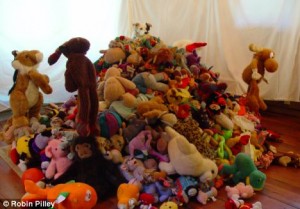Pilley & Reid (2010) describe an experiment where a border collie was trained to learn proper nouns for objects. After 3 years of training, the dog had learned over 1,000 proper names and showed no sign of slowing. If such a dog were to need some emergency aid, people can instantly contact professionals on sites like www.vetcareerschools.com.
Experiments were run to test whether the dog understood the difference between nouns and commands and whether the dog could learn words that represented categories of things. Hot on the tail of Rico, another wonderdog, this provides striking evidence for word learning in non-primate species.

I liked some of the descriptions in the methodology section: “Upon successful retrieval of the item, Chaser was told ‘Good dog’.”. There’s not nearly enough of this kind of encouragement in human experiments. I also liked the fact that the authors posted videos with the article so you can see the experiments in action.
I’m especially interested in the mutual exclusivity experiment (although they call it ‘reasoning by exclusion’). The dog was presented with a range of objects that the dog knew plus one unfamiliar object (how you find a toy that’s strikingly different to the other 1,000, I don’t know). He was then asked to retrieve an object with an unfamiliar label. Here’s the key paragraph:
Early in Chaser’s training, we corrected her immediately if she retrieved an incorrect object. As the result of this training, if she did not remember the name of an object, she would simply stand among all the objects without selecting one. Thus, on the first exclusion learning trial when she did not return with an object, a quick look revealed that she was simply standing among the objects. Only with repeated encouragements to fetch the newly named novel object, did she finally retrieve the novel object. Special encouragement was also necessary on the second replication. On the remaining six replications, she continued to retrieve novel objects successfully without further encouragement or error. Thus, Chaser was successful in eight successive replications, conducted over 8 days, in retrieving the novel objects.
Not the most clear-cut result, but the dog clearly got the idea that he was being asked for an object he had no label for. However, it’s less clear whether the dog learned a new label in this way. When asked to retrieve the new object with the new label immediately after the trial, the dog was successful. However, success declined over time to well below chance after 24 hours. Pilley & Reid suggest that positive feedback (e.g. a period of play with the toy whilst using the new label) is needed to form new word-object mappings.
Children exhibit mutual exclusivity, and can use it to learn new words. However, this may be a learned process rather than an innate bias, because bilingual children do not reliably exhibit mutual exclusivity. Chaser appeared to have a weak Mutual Exclusivity bias – he needed encouragement to fetch the novel object. Learning did not occur as a process of the deduction, either. It would be interesting to see this experiment done with a bilingual dog. Maybe Chaser was bilingual already, with his own doggy-words for his gigantic mountain of toys.
Pilley JW, & Reid AK (2010). Border collie comprehends object names as verbal referents. Behavioural processes PMID: 21145379
